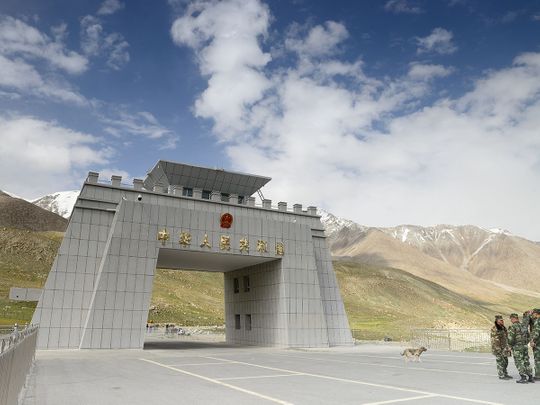
The development of China-Pakistan Economic Corridor (CPEC) is meant to help Pakistan take off economically. The bilateral project has been aimed to improve infrastructure within Pakistan and integrate the countries of the region.
Launched on April 20, 2015, the Chinese President Xi Jinping and the then Pakistani Prime Minister Nawaz Sharif signed 51 agreements and Memorandums of Understanding valued at a whopping $46 billion. With addition of new projects the value of CPEC has gone up to $62 billion.
The overall goal of CPEC is both to transform Pakistan’s economy — by modernising its road, rail, air, and energy transportation systems — and to connect the deep-sea Pakistani ports of Gwadar and Karachi to China’s Xinjiang province and beyond by overland routes.
The project continues though it may have missed some timelines. The CPEC was supposed to harmonise interprovincial relations but there have been some issues in Balochistan — the home of flagship Gwadar project. The recently ousted Imran Khan government has been also been blamed for slowing down the implementation of the CPEC. However the causes of slowdown go deeper.
Externally the CPEC has faced antagonism from Pakistan’s neighbours. New Delhi has been sceptical of CPEC because it enhances Chinese capabilities in the region.
The United States has remained the principal critic of China’s Belt and Road Initiative (BRI), of which the CPEC is an essential component. Notwithstanding the external reasons for delay in implementation of the CPEC, there are essentially domestic issues that have caused the delay in planning and its execution.
While some differences were expected in executing a project of this magnitude, the Pakistan government in 2015 promoted the CPEC as s ‘gift’ from China.
In reality much of the funding has been soft loans from Chinese commercial banks. For China it was ‘a partnership’ with shared responsibilities between Beijing and Islamabad. This duality of the concept itself led to conflicting implementation strategies.
Cost overruns
Shahbaz Sharif, the current Prime Minister when he was the Chief Minister of Punjab lobbied hard to include the Lahore’s Orange Train as a part of the CPEC projects. Nawaz Sharif was Pakistan’s Prime Minister at that time.
Since the Sharif brothers have proclivity for undertaking grand enterprises, the Orange Train, with its cost overrun left little capital for the strategically important M-1 Peshawar to Karachi railway modernisation.
The prioritisation of three main road works connecting China’s Xinjiang with Gwadar turned out to be a bit of an issue. Of the three, the western route is the shortest and more aligned to the vision guiding the CPEC. The government pushed for the eastern route that runs through much of Punjab.
Hollow denials in the face of protests did not pacify the smaller provinces. Political pressure finally compelled the Punjab government to rearrange the priorities. Precious time was lost.
Pakistan’s provinces that assumed extensive powers under the 18th constitutional amendment demonstrated lack of capacity while owning the projects. There has been serious absence of coordination between the federal and provincial levels, causing constant adjustments to suit various interests and consequent delays.
Gwadar is the crown jewel of the CPEC. Years before the CPEC was launched, land grab was the favourite past time among various interest groups in that region. This scramble actually edges out various stakeholders like the Baloch and is the reason for much consternation.
Back on track?
Imran Khan’s PTI government came to power with a different set of priorities, aimed at social welfare projects, which did not fully align with the CPEC vision.
National Accountability Bureau’s (NAB) action on irresponsible allegations splashed by the media was unhelpful. The NAB was subtly advised to back off and yet damage had been done. The industrial zones, precursor to setting up factories again fell to chauvinistic attitude among provinces, delaying the process. In the end it boils down to a different way of work.
Compared to the Marshall Plan (rebuilding of post-World War II), CPEC has faced several hiccups but the new government in Pakistan is scrambling to assuage Chinese concerns around the project.
Pakistan’s new foreign minister Bilawal Bhutto Zardari on Monday sought to further strengthen Pakistan’s “all weather strategic partnership” with China, including through the “rapid implementation” of the CPEC.
Sajjad Ashraf served as an adjunct professor at the Lee Kuan Yew School of Public Policy, National University of Singapore from 2009 to 2017. He was a member of Pakistan Foreign Service from 1973 to 2008 and served as Pakistan’s ambassador to several countries.








